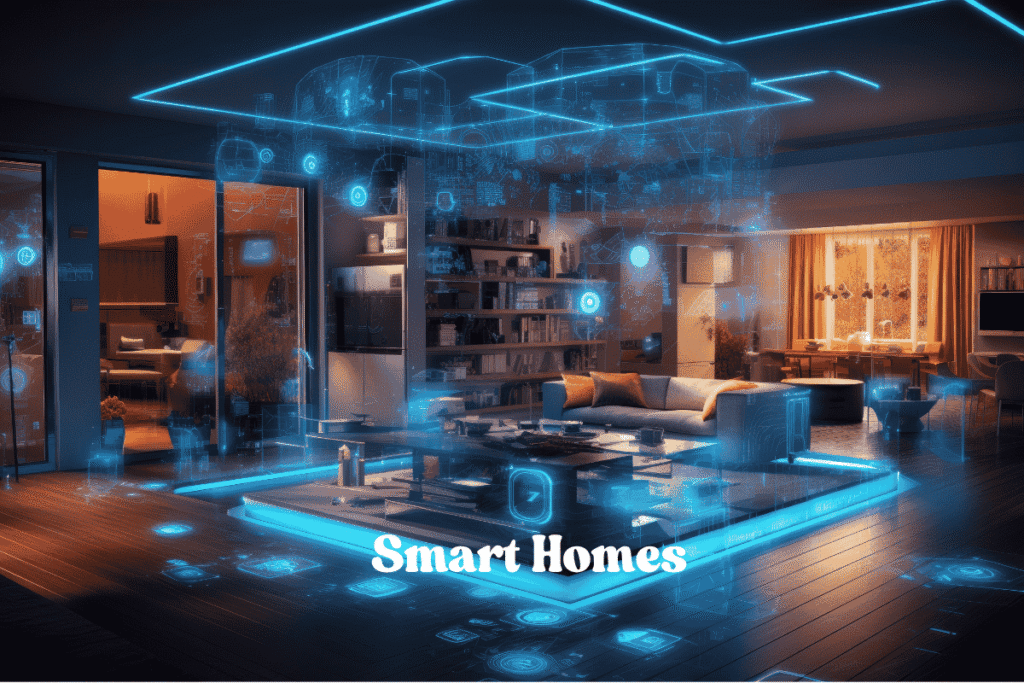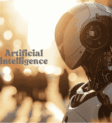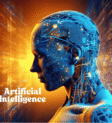Hello people! What impact is AI in smart homes likely to have on how we live at home in the future? A home filled with AI is becoming more comfortable, flexible, and personal. Because of AI, smart homes now learn from users, anticipate their needs, and react appropriately when the user is present. AI is helping to cut energy costs, increase security, improve health checks, and design user interfaces that are easy to handle, all to transform our home environment.
It closely examines the progress of smart homes, the significant changes AI brings, the difficulties during implementation, and the new trends likely to make our homes more comfortable, eco-friendly, and connected. It explains how AI affects our lives now.
Let’s dive in!
Table of Contents
The Evolution of Smart Homes
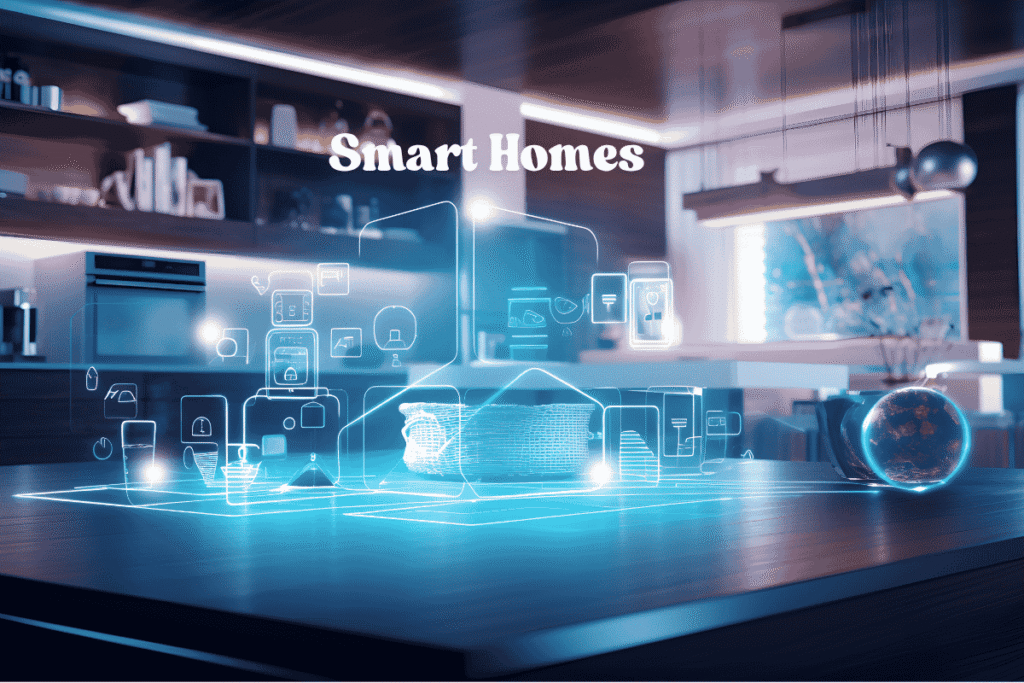
Evolving Toward Smart Systems
Smart homes were created in the 1980s through home automation, letting people turn appliances or lights on and off remotely or on a timer. The wired connections in the first systems stopped X10 from being very advanced. At the beginning of the 2000s, Zigbee and Z-Wave wireless protocols appeared, helping integrate devices more easily.
AI being used in various fields in the 2010s was very important. With Amazon’s Alexa, Google Assistant and Apple’s Siri, voice control and NLP have become part of smart homes. By 2030, driven by what AI can offer, the smart home market is expected to grow from $103 billion in 2023 to $338 billion.
AI’s Role
In smart homes, AI depends on machine learning, computer vision, and IoT (Internet of Things) to look at data gathered by sensors, cameras, and activities involving users. It prepares homes for the future, cuts costs, and increases comfort. Like Nest, AI-controlled thermostats recognize what the user needs and change temperatures automatically which can save them 10-15% on energy costs.
AI in Smart Homes
Personalized Home Assistance
AI in smart homes helps give people highly personalized experiences by noticing their behavior and likes. Algorithms in machines can self-adjust lighting, temperature, and entertainment for your comfort.
- Time of day and your activities help Philips Hue adjust the lights with AI which means a night of watching a movie could be dimly lit.
- Spotify and Netflix are examples of smart AI that suggest what to listen to or watch, with control possible through smart speakers.
- AI-powered refrigerators such as the Samsung Family Hub record kitchen supplies and recommend dishes a person can make with what is on hand.
Results:
Making experiences personal makes users happier since 80% of smart homeowners said convenience improved following a 2023 survey.
Energy and Sustainability
AI helps save energy which improves the sustainability of smart homes. AI assessing when appliances are used can help save both energy and money.
- Devices like Ecobee with AI can tell when no one is home and change the temperature to save 20% of energy use.
- Sense and similar platforms are able to track how much energy every home item uses, point out inefficiencies, and advise homeowners on the best solutions.
- AI enables solar energy and battery use to be coordinated, so energy is used according to weather and current demand.
Google Nest
In 2023, the AI-enabled thermostats from Nest are estimated to have helped U.S. homes save 14 billion kWh of energy which is enough to supply power to 1 million homes for one year.
Better Security and Safety
New security systems are driven by AI to protect homes in real-time by spotting risks as they occur.
- Ring’s smart cameras apply computer vision to sort between people, pets, and other objects which results in fewer false alarms.
- August smart locks rely on AI and facial scans or users’ daily routines to provide better security access.
- AI technology detects smoke, carbon monoxide, or water problems and immediately tells homeowners.
Effect
Heavily used AI security systems have lowered home burglary rates by 15% in the most affected areas, based on 2024 data.
Health and Wellness Checking
Smart home AI is now involved in healthcare by checking on the well-being of those living in the home.
- AI can link up with wearables like Fitbit to observe sleep and advise on ways to improve wellness.
- CarePredict is an AI system that tracks what seniors do, notices anything unusual like a fall, and alerts people caring for them.
- The purifiers from Dyson are intelligently managed by AI to improve the air according to its quality which helps protect our lungs.
Amazon Halo
Amazon Halo comes with a Wearable and uses Alexa for health-related information which has improved user wellness by 10% based on early trials.
Integrated Smart Systems
Because of AI, many different smart devices can cooperate in your home, creating an integrated system.
- AI-powered platforms like Samsung SmartThings bring together various devices so they all function well together.
- Google Assistant and similar voice assistants can manage a large range of devices at once by voice command.
- AI can do things automatically based on user activity such as opening the blinds after someone wakes up.
Impact
Because of interoperability, more Americans are using smart devices: 60% of households owned a smart device in 2024.
AI Challenges in Smart Homes
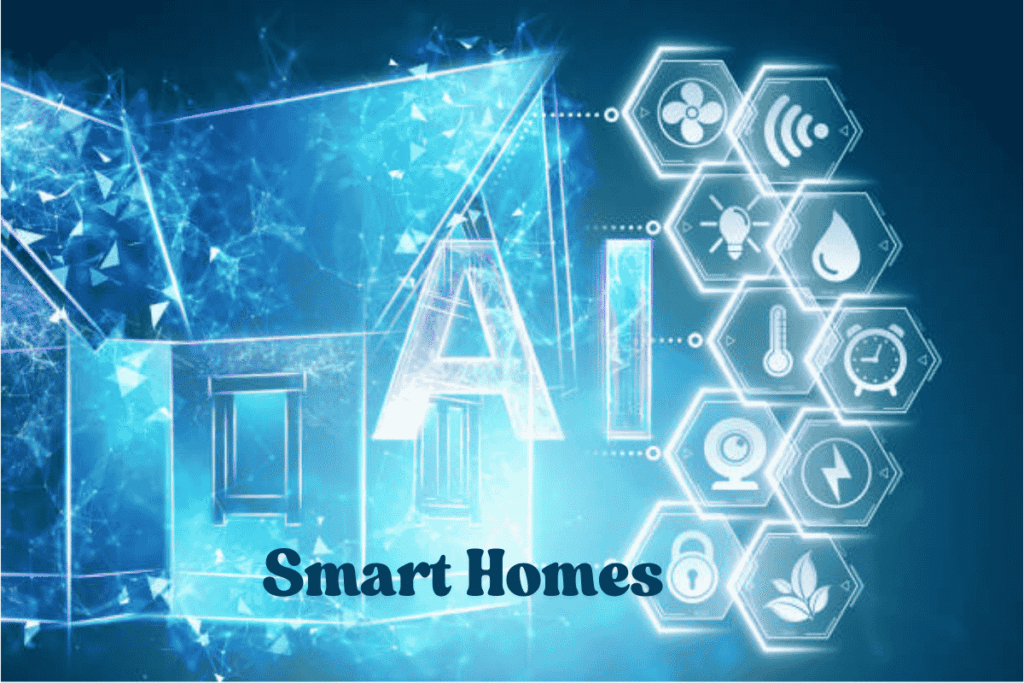
Data Privacy and Security
Using AI in smart homes requires collecting a lot of data which your privacy might be compromised by. Things like smart cameras and microphones may be used to collect information which can lead to data breaches.
- Issue: According to Pew Research in 2023, 20% of smart home users were worried about their privacy.
- Solution: Trust can be built by relying on end-to-end encryption and clearly stated data policies which GDPR requires.
Interoperability Issues
Because some smart devices still do not get along, the ecosystems remain spread out.
- Issue: HomeKit is a proprietary protocol that makes it hard for HomeKit-based devices to connect with devices from different brands.
- Solution: A solution is emerging with the Matter standard, introduced in 2022, aiming to unite different smart home systems, as around 70% of new products in the next few years will follow Matter.
Cost and Accessibility
Because AI technology is costly, it is less available to people in developing parts of the world.
- Issue: To have a fully set up smart home, you could spend $5,000 to $10,000, not including the cost of installing everything.
- Solution: Now affordable Wyze devices and cloud-based AI solutions are opening AI up to more people.
User Learning Curve
Older adults or people not used to technology can find complex AI tough to use.
- Issue: 2024 research indicated that over one in four smart home users had some trouble when setting up their devices.
- Solution: Make it easier for users by having simplified interfaces and AI-based guides to help them set up the device.
Environmental Impact
Running AI models and powering smart devices uses plenty of energy which adds to carbon emissions.
- Issue: Data centers used for AI handling give off emissions as intense as those from small cities.
- Solution: Using energy-saving algorithms and centers that run on renewable energy reduces what AI takes from the environment.
Smart Homes of the Future
Multimodal AI Integration
By 2025, homes will be smarter because multimodal AI uses text, voice, and images to support our lives. If you have an AI assistant, it may notice your voice, gestures, and the setting to anticipate what you need next such as adjusting the room’s lighting to suit your mood.
Agentic AI for Autonomy
AI that can make decisions by itself will take over difficult jobs. This means AI could adjust energy settings, deal with security, and manage to place grocery orders without being told by the user.
Edge AI to Work in Real Time
Working with data directly on devices rather than sending it to servers is faster and more private due to edge AI. Without being linked to the cloud, a smart camera or thermostat can still make its own choices, avoiding delays and reducing data safety issues.
AI used in Sustainability
AI will play a bigger role in improving energy efficiency by including clean renewable sources like solar panels. Using predictive algorithms, electricity use will be optimized for weather and grid demands which will reduce emissions by 10% in the next 10 years.
Health-focused Smart Homes
AI will also allow health monitoring by using sensors to watch over vital signs and mental health. Two years from now, smart homes may notice the beginning stages of dementia and signal healthcare providers to come.
AI Ethics and Regulations
Ethical AI Use
Ethics should always be at the core of AI in smart homes.
- Companies have to make clear how they are collecting and applying user data.
- AI systems are required to avoid giving biased facial recognition results.
- Homeowners must be able to manage whatever AI is installed in their homes.
Regulatory Frameworks
In 2025, regulations such as the EU’s AI Act will make strict privacy and security rules mandatory. States like California are passing laws involving AI to ensure consumer protection. If businesses want to maintain trust, compliance will be very important.
Ring’s Privacy Controversy
In 2023, there were concerns about Ring allowing unauthorized access to people’s camera recordings. Making encryption more secure and adding user consent protections ended the concerns and showed the demand for strong security.
AI’s Impact on Smart Homes
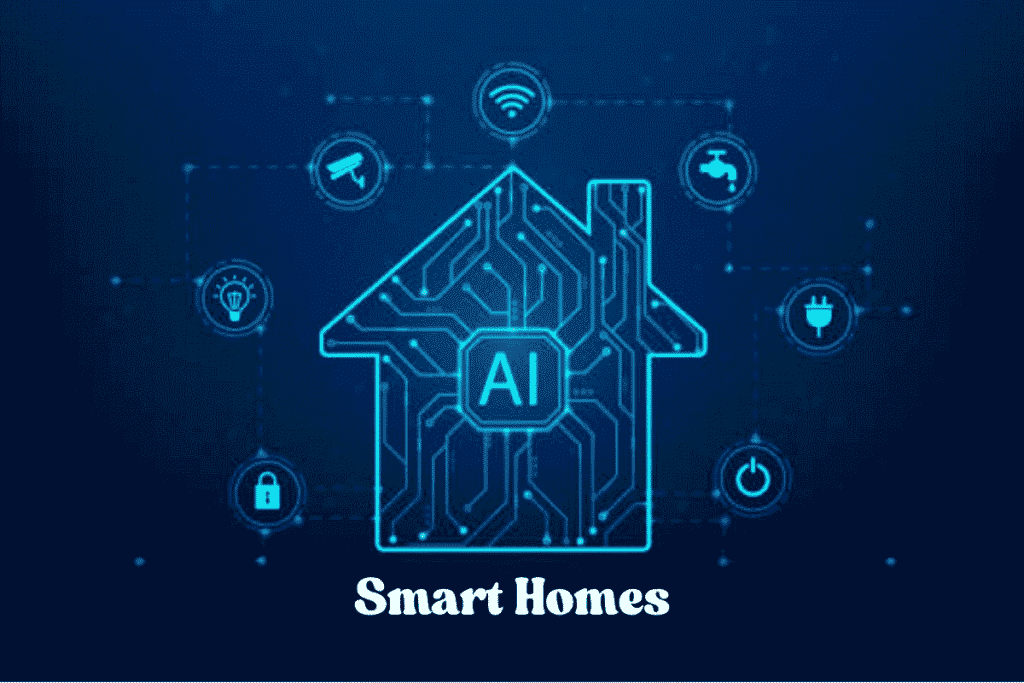
Societal Benefits
- AI automates common activities, giving users around 5 additional hours every week.
- AI helps the elderly and those with disabilities live on their own with more independence.
- Artificial intelligence to save energy supports objectives for a lower-carbon world.
Economic Implications
As the smart home market grows, it will demand more people in AI development, installation, and maintenance roles. By the horizon year of 2030, the industry might contribute up to $1 trillion to the economy, says McKinsey.
Global Adoption
Smart home systems are mostly found in wealthy nations now, but emerging countries are rising to this trend. Lower prices for smart home gadgets and artificial intelligence on the cloud allow homes in Asia and Africa to get involved.
Conclusion
AI technology in smart homes is rapidly making houses smarter, more eco-friendly, and tailored to each owner. Proven by their energy efficiency and AI-controlled security, these things add to our convenience, safety, and comfort. At the same time, privacy, ensuring different devices work with each other, and costs all need addressing to make sure everyone can use them equally.
When multimodal AI, edge computing, and monitoring health trends become more popular, smart homes will become smarter and work more smoothly with the environment. In making ethical choices and putting users first, AI will turn our homes into smarter systems that know what we need and can help us. What else is AI in smart homes equipped to handle?
FAQS
- How does the use of AI improve personalizing a smart home?
AI uses the user’s choices to set lighting, temperature,e, and entertainment.
- What is the role that AI has in making modern security systems more effective?
AI is helping in many ways, as it stops false locks, and makes cameras watch for nasty threats.
- In what ways does AI help make smart homes more energy-efficient?
Makes the thermostats and appliances more efficient, saving 20% of the energy used before.
- What problems does AI come across in smart homes?
People are worried about privacy, there are still difficulties with connecting different systems, and implementing blockchain can be very costly.
- Which AI trends will change or influence smart homes?
Home automation is changed by multimodal AI, edge processing, and health monitoring.
